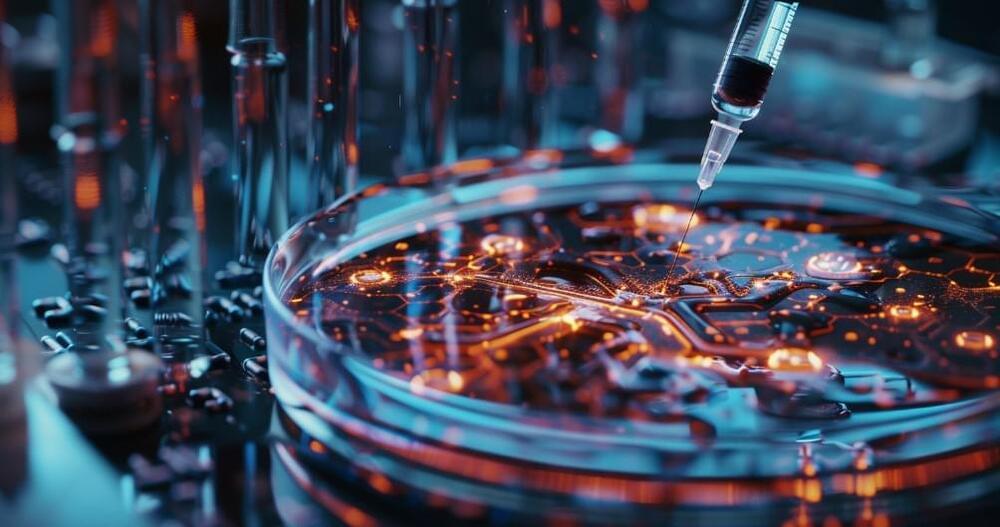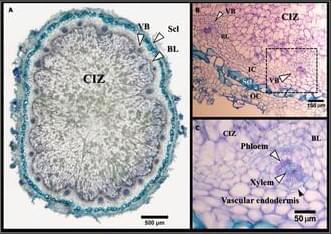The new organoids were grown in the lab for up to 40 days, and they mimicked the central nervous system of an 11-week-old human embryo.




The Spiral Multiverse Theory, proposed by computer engineer Tejas Shinde, challenges the conventional Big Bang theory by suggesting a continuous spiral pattern universe originating from a single point, or singularity. This theory posits that each universe begins with its own bang, forming a network of interconnected universes expanding in a spiral shape. The theory introduces the concept of interdimensional quasars as portals for multiverse travel and suggests each universe undergoes its own inflation without observable changes in the cosmic microwave background. This new perspective on cosmic evolution could open up new avenues for scientific exploration and understanding.
The Spiral Multiverse Theory, proposed by Tejas Shinde, a computer engineer, suggests a continuous spiral pattern universe originating from a single point, known as a singularity. This theory challenges the conventional Big Bang theory, which posits a singular explosive origin for the universe. Instead, the Spiral Multiverse Theory proposes that each universe begins with its own bang, forming a network of interconnected universes. This network, or multiverse, expands in a spiral shape, with the width and length of the arms expanding as the universe expands. The point where all universes connect is referred to as the Everyverse.
The Spiral Multiverse Theory offers a fresh perspective on cosmic evolution and presents a potential path for practical research. It introduces the concept of interdimensional quasars as portals for multiverse travel. The theory also suggests that each universe undergoes its own inflation without observable changes in the cosmic microwave background, a remnant radiation from the Big Bang.

It takes an incredible amount of energy to both train and operate artificial intelligence software, as we explored last week in The Bleeding Edge – AI’s Thirst for Power.
OpenAI’s GPT-4 generative AI, which powers its ChatGPT, required about 10 megawatts (MW) of electricity to train. That’s roughly equivalent to the power requirements of 10,000 average homes.
It’s also about 833,000 times the electricity required to power the human brain.
Visit https://brilliant.org/scishow/ to get started learning STEM for free. The first 200 people will get 20% off their annual premium subscription and a 30-day free trial.
In 2023, a team of researchers proposed that our universe experienced not one, but TWO Big Bangs about a month apart from one another. The first for the stuff described by our Standard Model of Particle Physics. And the second for that ever elusive Dark Matter and all the particles associated with it.
Hosted by: Stefan Chin (he/him)
———
Support SciShow by becoming a patron on Patreon: / scishow.
———
Huge thanks go to the following Patreon supporters for helping us keep SciShow free for everyone forever: Adam Brainard, Alex Hackman, Ash, Benjamin Carleski, Bryan Cloer, charles george, Chris Mackey, Chris Peters, Christoph Schwanke, Christopher R Boucher, DrakoEsper, Eric Jensen, Friso, Garrett Galloway, Harrison Mills, J. Copen, Jaap Westera, Jason A Saslow, Jeffrey Mckishen, Jeremy Mattern, Kenny Wilson, Kevin Bealer, Kevin Knupp, Lyndsay Brown, Matt Curls, Michelle Dove, Piya Shedden, Rizwan Kassim, Sam Lutfi.
———
Looking for SciShow elsewhere on the internet?
SciShow Tangents Podcast: https://scishow-tangents.simplecast.com/
TikTok: / scishow.
Twitter: / scishow.
Instagram: / thescishow.
Facebook: / scishow.
The Sunny Spot | Sunny Shell speaking with guest, Ethan Siegel. Dr. Ethan Siegel’s discussions often emphasize the broader implications of habitable zones, in…

Published in Plant Phenomics:Click the link to read the full article for free:
The efficiency of N2-fixation in legume–rhizobia symbiosis is a function of root nodule activity. Nodules consist of 2 functionally important tissues: (a) a central infected zone (CIZ), colonized by rhizobia bacteria, which serves as the site of N2-fixation, and (b) vascular bundles (VBs), serving as conduits for the transport of water, nutrients, and fixed nitrogen compounds between the nodules and plant. A quantitative evaluation of these tissues is essential to unravel their functional importance in N2-fixation. Employing synchrotron-based x-ray microcomputed tomography (SR-μCT) at submicron resolutions, we obtained high-quality tomograms of fresh soybean root nodules in a non-invasive manner. A semi-automated segmentation algorithm was employed to generate 3-dimensional (3D) models of the internal root nodule structure of the CIZ and VBs, and their volumes were quantified based on the reconstructed 3D structures. Furthermore, synchrotron x-ray fluorescence imaging revealed a distinctive localization of Fe within CIZ tissue and Zn within VBs, allowing for their visualization in 2 dimensions. This study represents a pioneer application of the SR-μCT technique for volumetric quantification of CIZ and VB tissues in fresh, intact soybean root nodules. The proposed methods enable the exploitation of root nodule’s anatomical features as novel traits in breeding, aiming to enhance N2-fixation through improved root nodule activity.

When Elon’s critics say that Mars colonization is impossible, citing radiation as the main threat. They could not be more wrong…#space #nasa #mars Please…
It’s the twenty-fifth century, and advances in technology have redefined life itself. A person’s consciousness can now be stored in the brain and downloaded into a new body (or \.